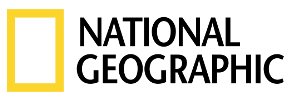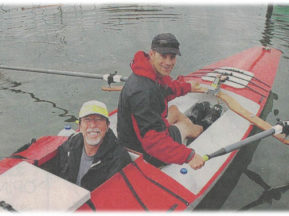PLANET EARTH HOME AT LAST
After two years and 43,000 kilometres, Colin Angus returns to Vancouver this morning, completing the first human-powered circumnavigation of the planet. Angus and his fiancée, Julie Wafaei, will conclude the trip at the University of British Columbia’s Museum of Anthropology. In this final dispatch from the road, Angus sums up his globe-girdling odyssey.
The terrain transformed from dry, rolling farmland to lush rain forest in a matter of hours as Julie and I cycled over Washington’s coastal mountain range — the final obstacle on our route back to Vancouver. As we coasted down the western slopes toward Seattle past stands of ancient cedar and fir, I finally felt home was near and that our 43,000-kilometre odyssey was about to end.
Two years previously, upon leaving Vancouver (with then-trip-mate Tim Harvey) on our shiny new Norco bicycles, the prospect of attempting the first human-powered circumnavigation was both exciting and daunting. We planned to row across two oceans and cycle, ski and trek across three continents.
We canoed 1,500 kilometres down the Yukon River to the Dalton Highway in Alaska. Here we picked up our specially outfitted ocean rowboat. The 18-foot vessel was packed with freeze-dried provisions for five months, skis, Arctic clothing and camping gear, and bicycles with studded tires.
We rowed our heavily burdened vessel down the final 1,600 kilometres of the Yukon River to the cobalt waters of the Bering Sea. Our destination was Providenya, Siberia, more than 400 kilometres across the sea. Unfortunately, calm conditions soon gave way to the biggest storm of the summer and 20-foot waves crashed over our boat.
The fierce wind and waves drove our boat off course to Nome, Alaska, and it soon became apparent that without help we would wreck on this remote coastline.
Our mayday call received a grim response: The storm was too bad for even the crab ships to leave the tiny harbour of Nome and there were no Coast Guard units in this area.
With our calamitous fate almost assured, our saviour came in the form of a Russian research vessel capable of handling the rough seas. A line was tossed from the Professor Khromov to our tiny boat and they dropped anchor, preventing us from being blown to shore.
Later, after making repairs in Nome, we continued our rowing voyage to Providenya, where we presented to Russian immigration and customs officials the travel permits that had taken more than a year to obtain.
With no roads in northeastern Siberia, we trekked for 650 kilometres, until winter halted progress on foot. Our pace increased with freezing temperatures, when we could ski on snow and bicycle on frozen rivers.
The roads gradually improved, and the ribbon of dirt and asphalt led across Russia and into Western Europe. (It was in Russia that Angus and Harvey parted ways, Angus continuing on through Europe with fiancée Julie Wafaei).
The next major barrier was the Atlantic Ocean. Julie and I spent two weeks repairing and outfitting our rowboat for a five-month unsupported row from Lisbon to Limon in Costa Rica. It was the most difficult leg of the expedition.
Although the row was timed to miss the European stormy season, and the Atlantic hurricane season, we were unfortunate in picking the worst hurricane year in history to make the crossing. During our four months at sea, we received four glancing blows from two hurricanes and two tropical storms.
Finally, after what seemed like an eternity alone on the high seas, Julie and I reached Costa Rica, bedraggled, tired and happy. A bike ride through Central America, Mexico and the U.S. has taken us home to Vancouver and the completion of our human-powered journey.One of the expedition’s objectives has been to promote zero-emissions transportation as a fun and healthy means of getting around. It has been a privilege exploring this vast planet at a human-powered speed, and we are hoping that others also will be inspired to tread and pedal lightly so our natural environment can be preserved for years to come.
Read the article on the Globe and Mail website.



















